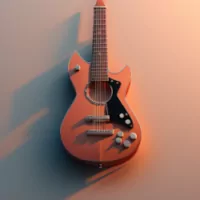Any guitarist who wishes to grow their repertoire and interact with other musicians must be able to read both traditional music notation and tablature (tab).
Standard Music Notation:
The symbols used in standard music notation are used to express the pitch, length, and timing of musical notes. It is frequently utilized in classical music and is also used in many other types of music.
Tablature
The system of notation known as tablature was created especially for fretted string instruments like the guitar. It represents the fret and string to play, not the actual pitch of the music.
Standard Music Notation:
Five horizontal lines and four spaces make up the staff. A separate musical pitch is represented by each line and gap.
On the staff, notes are represented by oval shapes. The pitch of a note is determined by its location on the staff, whereas its duration is determined by its type (whole note, half note, quarter note, etc.).
Clef: The staff’s clef symbol, such as the treble clef for a guitar, designates the range of pitches it represents.
Time Signature: Two numerals are written at the staff’s top to indicate the time signature. The bottom number denotes the note value that receives one beat, and the top number specifies how many beats there are in each measure.
Rests: Rests are the musical equivalent of pauses, with lengths akin to notes.
Tablature
Six horizontal lines make up the tablature (Tab lines), each of which represents a guitar string. The highest-pitched string (often the high E string) is represented by the top line, while the lowest-pitched string (typically the low E string) is represented by the bottom line.
Numbers: The fret to push on the appropriate string is indicated by the numbers on the lines. For instance, the second line’s “3” would indicate that the B string’s third fret should be depressed.
Rhythmic Notation: The rhythm is not explicitly notated in tablature. Instead, spacing usually indicates how long each note lasts. In contrast to notes that are closer together, notes that are farther apart are held for a longer period of time.
Standard notation captures musical expression, dynamics, and other performance details, so combining it with tablature can help you understand a piece of music more thoroughly. You can often find music written in both notations side by side in guitar songbooks.
Consider getting lessons from a music teacher who can walk you through the process and give you practical practice if you want to learn how to read both tablature and conventional music notation. You may also find a ton of lessons and tools online to help you get better at reading. Before advancing to more complex music, regularly practice and start with easy pieces.
